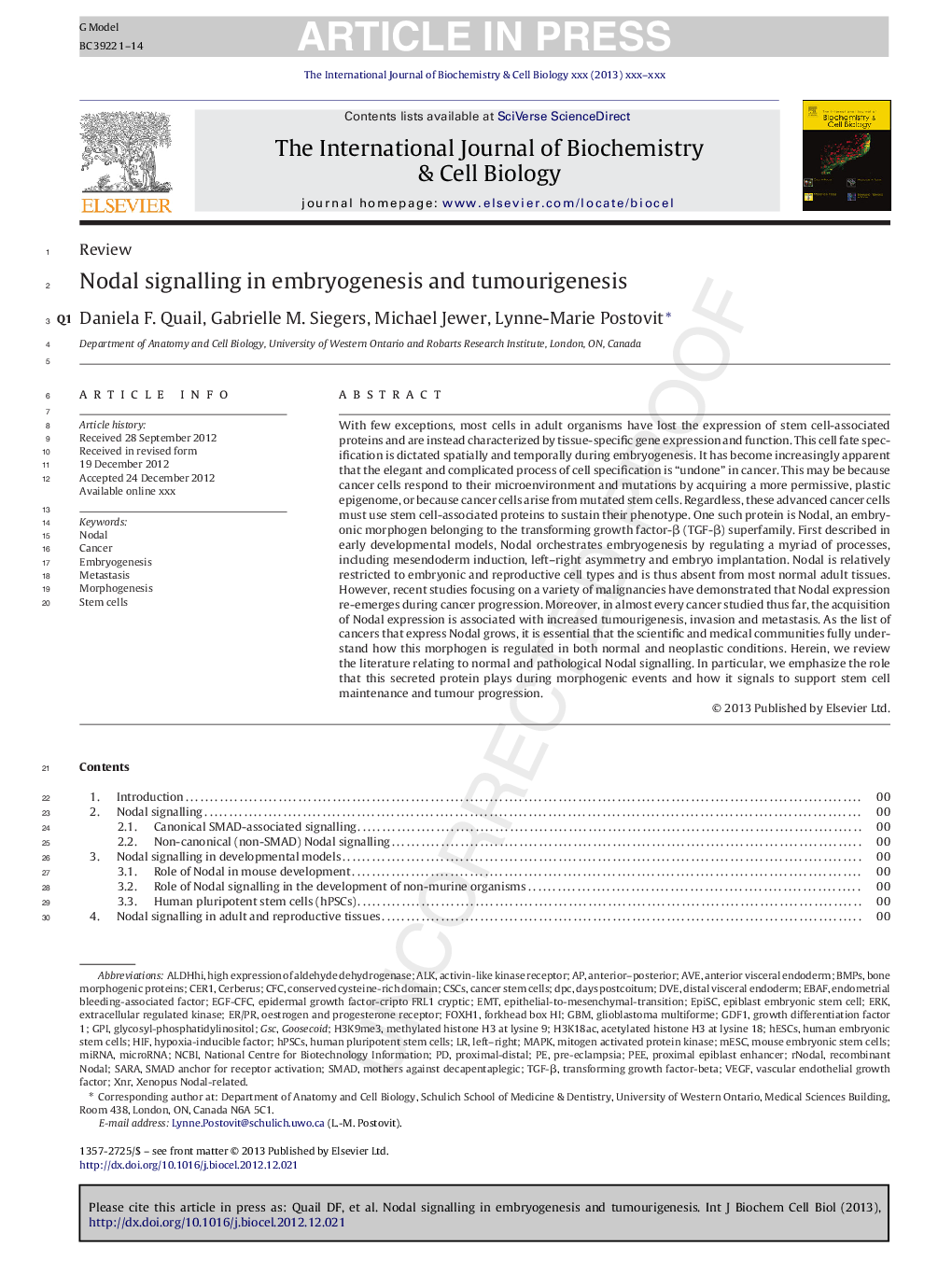| Article ID | Journal | Published Year | Pages | File Type |
|---|---|---|---|---|
| 8324190 | The International Journal of Biochemistry & Cell Biology | 2013 | 14 Pages |
Abstract
With few exceptions, most cells in adult organisms have lost the expression of stem cell-associated proteins and are instead characterized by tissue-specific gene expression and function. This cell fate specification is dictated spatially and temporally during embryogenesis. It has become increasingly apparent that the elegant and complicated process of cell specification is “undone” in cancer. This may be because cancer cells respond to their microenvironment and mutations by acquiring a more permissive, plastic epigenome, or because cancer cells arise from mutated stem cells. Regardless, these advanced cancer cells must use stem cell-associated proteins to sustain their phenotype. One such protein is Nodal, an embryonic morphogen belonging to the transforming growth factor-β (TGF-β) superfamily. First described in early developmental models, Nodal orchestrates embryogenesis by regulating a myriad of processes, including mesendoderm induction, left-right asymmetry and embryo implantation. Nodal is relatively restricted to embryonic and reproductive cell types and is thus absent from most normal adult tissues. However, recent studies focusing on a variety of malignancies have demonstrated that Nodal expression re-emerges during cancer progression. Moreover, in almost every cancer studied thus far, the acquisition of Nodal expression is associated with increased tumourigenesis, invasion and metastasis. As the list of cancers that express Nodal grows, it is essential that the scientific and medical communities fully understand how this morphogen is regulated in both normal and neoplastic conditions. Herein, we review the literature relating to normal and pathological Nodal signalling. In particular, we emphasize the role that this secreted protein plays during morphogenic events and how it signals to support stem cell maintenance and tumour progression.
Keywords
AVEmESCfoxh1HPSCsSMADGDF1DPCGSCHIFCerberusEGF-CFCGPiGBMERKhESCsTGF-βH3K9me3CSCsmothers against decapentaplegicCFCNCBIBMPsMAPKALKPEEepithelial-to-mesenchymal-transitionAnterior visceral endodermtransforming growth factor-betaEMTEmbryogenesisdveSARACancerStem cellshuman embryonic stem cellsMouse embryonic stem cellsHuman pluripotent stem cellsCancer stem cellsNodalHypoxia-inducible factorVascular endothelial growth factorVascular Endothelial Growth Factor (VEGF)anterior–posteriorsmad anchor for receptor activationMetastasisNational Centre for Biotechnology InformationMorphogenesisMicroRNAMiRNApre-eclampsiabone morphogenic proteinsmitogen activated protein kinaseLeft–rightextracellular regulated kinaseGlioblastoma multiformeglycosyl-phosphatidylinositolGoosecoid
Related Topics
Life Sciences
Biochemistry, Genetics and Molecular Biology
Biochemistry
Authors
Daniela F. Quail, Gabrielle M. Siegers, Michael Jewer, Lynne-Marie Postovit,
